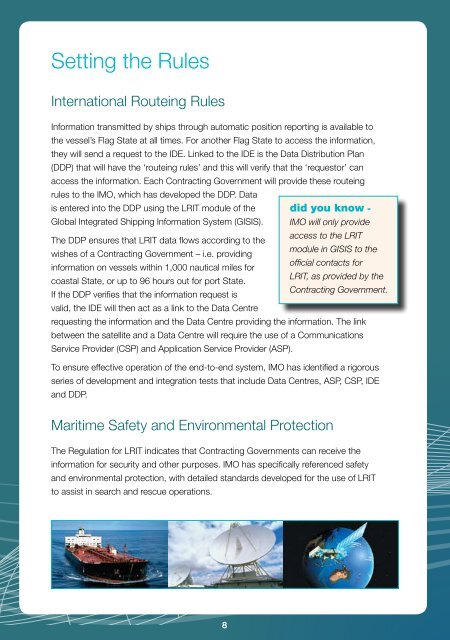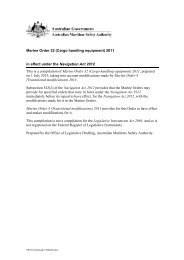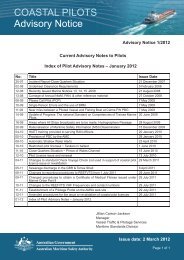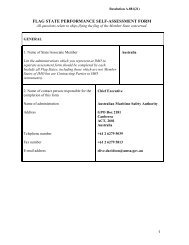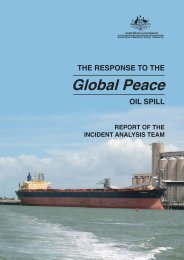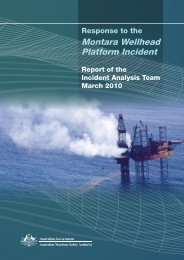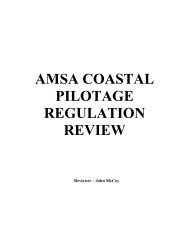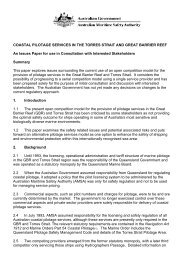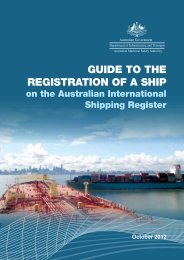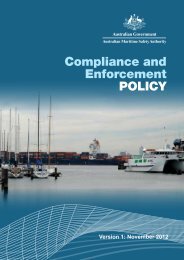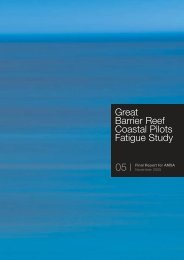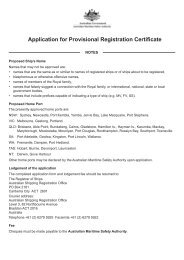LRIT Handbook - Australian Maritime Safety Authority
LRIT Handbook - Australian Maritime Safety Authority
LRIT Handbook - Australian Maritime Safety Authority
You also want an ePaper? Increase the reach of your titles
YUMPU automatically turns print PDFs into web optimized ePapers that Google loves.
Setting the Rules<br />
International Routeing Rules<br />
Information transmitted by ships through automatic position reporting is available to<br />
the vessel’s Flag State at all times. For another Flag State to access the information,<br />
they will send a request to the IDE. Linked to the IDE is the Data Distribution Plan<br />
(DDP) that will have the ‘routeing rules’ and this will verify that the ‘requestor’ can<br />
access the information. Each Contracting Government will provide these routeing<br />
rules to the IMO, which has developed the DDP. Data<br />
is entered into the DDP using the <strong>LRIT</strong> module of the did you know -<br />
Global Integrated Shipping Information System (GISIS). IMO will only provide<br />
access to the <strong>LRIT</strong><br />
The DDP ensures that <strong>LRIT</strong> data flows according to the<br />
module in GISIS to the<br />
wishes of a Contracting Government – i.e. providing<br />
official contacts for<br />
information on vessels within 1,000 nautical miles for<br />
<strong>LRIT</strong>, as provided by the<br />
coastal State, or up to 96 hours out for port State.<br />
Contracting Government.<br />
If the DDP verifies that the information request is<br />
valid, the IDE will then act as a link to the Data Centre<br />
requesting the information and the Data Centre providing the information. The link<br />
between the satellite and a Data Centre will require the use of a Communications<br />
Service Provider (CSP) and Application Service Provider (ASP).<br />
To ensure effective operation of the end-to-end system, IMO has identified a rigorous<br />
series of development and integration tests that include Data Centres, ASP, CSP, IDE<br />
and DDP.<br />
<strong>Maritime</strong> <strong>Safety</strong> and Environmental Protection<br />
The Regulation for <strong>LRIT</strong> indicates that Contracting Governments can receive the<br />
information for security and other purposes. IMO has specifically referenced safety<br />
and environmental protection, with detailed standards developed for the use of <strong>LRIT</strong><br />
to assist in search and rescue operations.<br />
8


